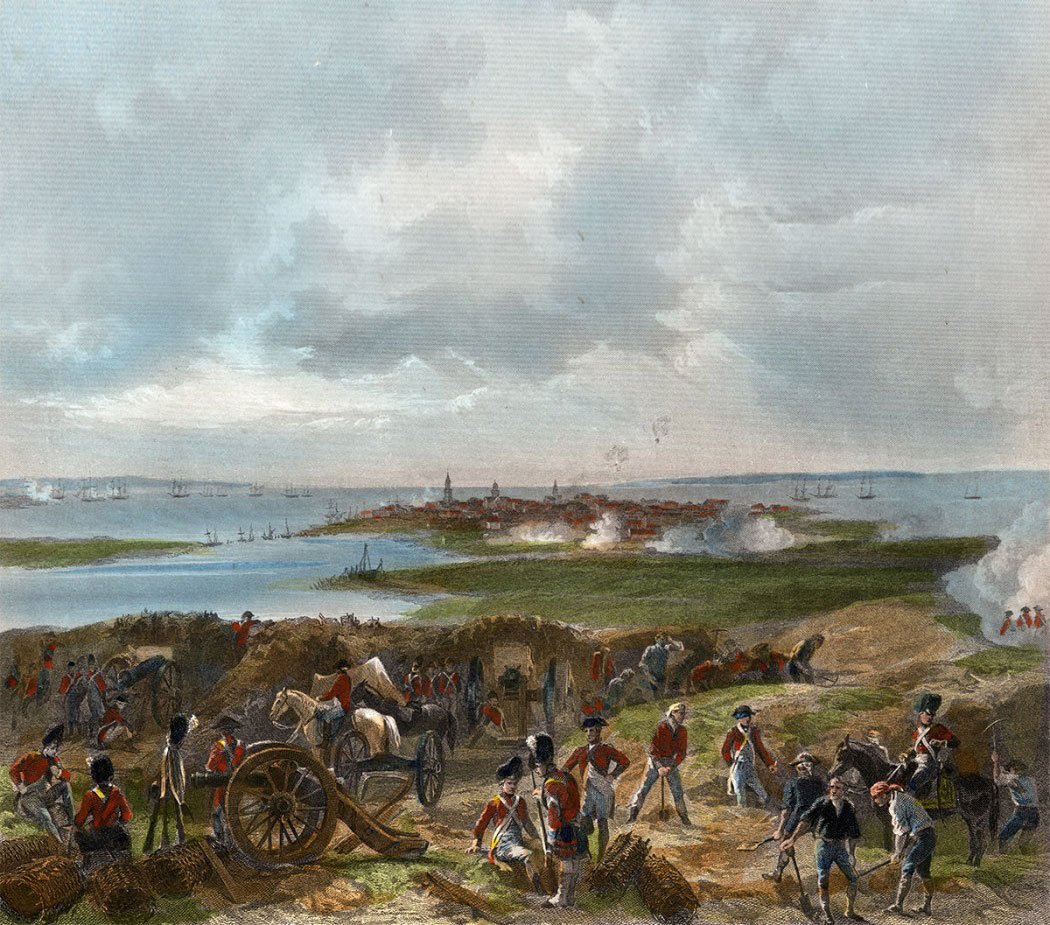


Siege of Charleston, South Carolina (29 March to 12 May 1780) during the American Revolutionary War painting by Alonzo Chappel, 1862
Did you know the British laid siege to Charlestown during the Revolutionary War and occupied it for 2 1/2 years?
In hindsight, it might seem easier to tell our Revolutionary history in a digestible but oversimplified “us versus them”, patriots versus the British narrative. But Charleston has a unique story to tell that speaks to the complexities of wartime South Carolina beyond the heroics of patriot leaders and failures of the British.
The new research presented on this page was sponsored by the National Society for The Colonial Dames in The State of South Carolina, funded by the SC250 Commission, and undertaken by Butler Preservation. It shares an inclusive history of life in Charleston under British control, exploring the positive and negative aspects of occupation, the built environment/places of activity, and providing vignettes of the experiences of the city’s occupants. Charleston had a diverse population including enslaved Africans and African Americans, Native Americans, free people of color, elite whites, women, children, tradespeople, and working-class Charlestonians of various religions, ethnicities, and political ideologies.
Learning more about their stories and experiences helps residents and visitors understand the community in which we live, a community that is deeply shaped by our history. We encourage you to read or download the report, “British Occupied Charleston, 1780-1872: Diverse Experiences and Daily Life in a Divided City” by Christina Butler, watch her lecture overview and take a closer look at some of the other materials we have assembled on this page.
Click to Enlarge
A sketch of the operations before Charlestown, the capital
of South Carolina", map made for Sir Henry Clinton, 1780
Funding for these projects was provided by state funds from the SC American Revolution Sestercentennial Commission (SC250)
Grant funding for this project was provided to The NSCDA-SC / Powder Magazine Museum by the South Carolina Sestercentennial Commission.
The purpose of the 250SC Commission is to plan and execute “a proper observance of the Sestercentennial of the American Revolution in South Carolina." The report, downloadable below, programming, and interpretive signage resulting from this project will tell a Revolutionary story appropriate for the 250th sestercentennial, providing a more complicated and inclusive understanding of life in the city during British occupation for visitors and locals.




